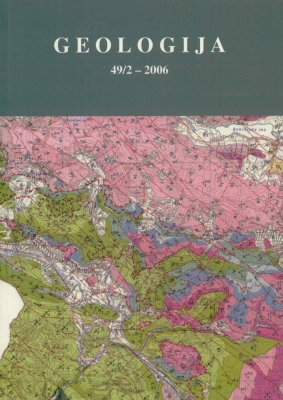Teksturno-strukturne lastnosti glinastega skrilavca in njegov odziv na točkovni obremenitveni test
DOI:
https://doi.org/10.5474/geologija.2006.019Povzetek
Glinasti skrilavci veljajo z geomehanskega vidika za enega od težavnejših kamninskih različkov. Rezultati raziskav jasno kažejo na tesno povezavo med teksturnimi, strukturnimi in mineraloškimi značilnostmi kamnine na eni ter med trdnostjo in odpornostjo na točkovni obremenitveni test na drugi strani. Oslabljene cone v njem so posledica anizotropij. Nastale so v prvi vrsti zaradi dinamometamorfoze primarne muljaste sedimentne kamnine, pri čemer se je oblikovala sekundarna skrilavost z izrazito prednostno orientacijo filosilikatov. Vzrok nizke trdnosti je šibka Van der Waals-ova kemijska vez med paketi notranje kristalne strukture listastih mineralov, predvsem sericita. Pomembne, vendar manj problematične anizotropije predstavljajo plastovitost in mikrogube s plisirano teksturo, prav tako z delno usmerjenimi listastimi minerali ter smeri oslabljene s sigmoidalno oblikovanimi strižnimi deformacijami, kot predhodniki mikroprelomov. Kljub navidezno masivnim plastem peščenega metameljevca v glinastem skrilavcu, predstavljajo tanke lepidoblastične lamine v njih diskontinuiteto, ki odločilno vpliva na znižanje njihove trdnosti.Prenosi
Kako citirati
Trajanova, M., & Mladenovič, A. (2006). Teksturno-strukturne lastnosti glinastega skrilavca in njegov odziv na točkovni obremenitveni test . Geologija, 49(2), 253–265. https://doi.org/10.5474/geologija.2006.019
Številka
Rubrika
Članki

